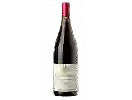
Winery Stéphane OrieuxDomaine de la Bregeonnette Chardonnay
This wine generally goes well with pork, vegetarian or poultry.
Wine flavors and olphactive analysis
Food and wine pairings with Domaine de la Bregeonnette Chardonnay
Pairings that work perfectly with Domaine de la Bregeonnette Chardonnay
Original food and wine pairings with Domaine de la Bregeonnette Chardonnay
The Domaine de la Bregeonnette Chardonnay of Winery Stéphane Orieux matches generally quite well with dishes of pork, rich fish (salmon, tuna etc) or vegetarian such as recipes of rabbit stew the old fashioned way, salt crusted sea bass or vegan leek and tofu quiche.
Details and technical informations about Winery Stéphane Orieux's Domaine de la Bregeonnette Chardonnay.
Discover the grape variety: Chardonnay
The white Chardonnay is a grape variety that originated in France (Burgundy). It produces a variety of grape specially used for wine making. It is rare to find this grape to eat on our tables. This variety of grape is characterized by small bunches, and small grapes. White Chardonnay can be found in many vineyards: South West, Burgundy, Jura, Languedoc & Roussillon, Cognac, Bordeaux, Beaujolais, Savoie & Bugey, Loire Valley, Champagne, Rhone Valley, Armagnac, Lorraine, Alsace, Provence & Corsica.
Last vintages of this wine
The best vintages of Domaine de la Bregeonnette Chardonnay from Winery Stéphane Orieux are 2015
Informations about the Winery Stéphane Orieux
The Winery Stéphane Orieux is one of of the world's greatest estates. It offers 21 wines for sale in the of Loire Valley to come and discover on site or to buy online.
The wine region of Loire Valley
The Loire Valley is a key wine region in western France. It follows the course of the Loire River on its Long journey through the heart of France, from the inland hills of the Auvergne to the plains of the French Atlantic coast near Nantes (Muscadet country). Important in terms of quantity and quality, the region produces large quantities (about 4 million h/l each year) of everyday wines, as well as some of France's greatest wines. Diversity is another of the region's major assets; the styles of wine produced here range from the light, tangy Muscadet to the Sweet, honeyed Bonnezeaux, the Sparkling whites of Vouvray and the juicy, Tannic reds of Chinon and Saumur.
News related to this wine
Chablis: #locationmatters by Yang LU
On December 10, 2020, four Hong Kong personalities discussed Chablis wines on a live webinar: Yang LU, Master Sommelier and Official Bourgogne Wines Ambassador, Debra MEIBURG, Master of Wine, Ivy NG, Official Bourgogne Wines Ambassador and Rebecca LEUNG, wine expert. In this first 90-second clip, Yang LU explains how location is the key to understanding “Why Chablis is special”. #Chablis #PureChablis ...
A panel discussion about the Chablis appellation
This film is the recording of a webinar on Chablis wines organized in December 2020 with four personalities from Hong Kong: Yang LU, Master Sommelier and Official Bourgogne Wines Ambassador, Debra MEIBURG, Master of Wine, Ivy NG, Official Bourgogne Wines Ambassador and Rebecca LEUNG, wine expert. They explain the purity of Chablis wines, discuss the latest vintages, and also talk about food and wine pairings, as well as global warming and the transition to more sustainable practices. #Chablis #P ...
The Mâcon plus appellation seen by Charles Lamboley
Charles Lamboley, marketing and communication director from Vignerons des Terres Secrètes, explains the differences between the appellation Mâcon-Villages and Mâcon plus a geographical denomination. This video is taken from the “Rendez-vous avec les vins de Bourgogne” program (March 2020). The Bourgogne Wine Board (BIVB) invites you to enjoy this video in which Jean-Pierre Renard, Expert Instructor at the Ecole des Vins de Bourgogne, explains the topographical and geological characteristics of t ...
The word of the wine: Passerillage
Concentration of the grape by drying out, under the influence of wind or sun, as opposed to botrytisation, which is the concentration obtained by the development of the "noble rot" for which Botrytis cinerea is responsible. The word is mainly used for sweet wines.














